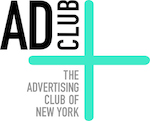Why 2015 became the year of LGBT ads

By Michelle Castillo
Originally Posted on CNBC.
It used to be taboo to feature gay, lesbian or transgendered people in advertising. But growing acceptance of the LGBT community by mainstream America, coupled with landmark legal decisions granting them equal marriage rights, has made brands less shy about targeting the group.
“Now that gay marriage is legal in most U.S. states, and individuals like Caitlyn Jenner are openly sharing their differences and struggles, we are starting to see a greater understanding of the LGBT community into the cultural mainstream,” said Gina Grillo, president and CEO of industry group the Advertising Club of NY, via email. “With a more open and transparent conversation, we would expect to see some kind of shift in how brands position themselves to the community.”
Virgin America showed its “Aloha Pride” in 2015 and became the official airline of San Francisco Pride festivities. Allstate launched “Out Holding Hands,” which showed solidarity with the notion that everyone should have the right to hold hands in public — a play off of its logo. Tiffany featured a gay couple in one of its wedding band “Will You”print ads.
Witeck Communications estimated that the LGBT community had a purchase power of $884 billion last year.
It’s not just that: Younger generations are more tolerant of other people. A Pew Research Center study in 2015 showed that 55 percent of Americans support same sex marriage, with only 39 percent directly opposed to it. Among millennials, 70 percent showed support.
With gay marriage being legalized in the U.S. in 2015, some experts believe that there’s potential for the wedding industry — among others — to grow.
“What’s going to change is the average age of couples getting married is going to trend downward,” Bob Witeck, president of Witeck Communications, previously told CNBC. “We have a pent-up demand of people who have been denied it for many years. Many of those are looking to legitimize and legalize their relationship so that they can be very confident that they can have legal custody of their children.”
In addition, with more celebrities like Jenner coming out and Hollywood not being afraid to feature LGBT storylines, it’s become acceptable for brands to show their support.
“If ads are a reflection of society, then ads need to incorporate more and more the LGBT community,” said Anselmo Ramos, chief creative officer of ad agency DAVID. “Brands are also starting to realize they need to stand for something. They can’t be on the fence. They can’t be everything to everyone all the time. They need to take a stand. That’s the expectation from a modern brand.”
That doesn’t mean there weren’t some controversies over ads featuring LGBT couples this year. A Wells Fargo ad featuring a lesbian couple adopting a child sparked Billy Graham churches to drop the bank. Advocacy group One Million Moms protested a Campbell’s Soup ad for featuring gay dads. The group also blasted Tylenol’s #HowWeFamily campaign, which had a same-sex prom couple and gay fathers among its featured couples.
Still, agency Fancy Rhino chief creative officer Vann Graves believes we’ve come a long way since 1994 when Ikea had to pull the first TV commercial featuring a gay couple in a mainstream commercial because of bomb threats.
Twenty-one years later, when Honey Maid ran its now-famous “This Is Wholesome” campaign featuring all kinds of couples, he pointed out that there was more applause than backlash. Graves said the idea of using all kinds of families was further expanded in the Tylenol ads.
“Each of these brands are embracing the underlying LGBT values to promote acceptance and open-mindedness, thereby appealing to a larger audience,” he said. “These ads show that LGBT marketing has become less about LGBT and more about a basic human truth.”
Deutsch NY CEO Val DiFebo, whose agency was responsible for the 1994 IKEA ads, added that the ad was “brave and groundbreaking” for the time. But, just this summer, she saw brands use key LGBT moments like Pride Month and the Defense of Marriage Act decision as real-time marketing opportunities, just like #Superbowl or #TheGrammys.
“Using trending hashtags like #GayMarriage or #AcceptanceMatters, or incorporating rainbow colors on social pages or logos, allow brands to become part of the conversation, a moment in history, in a contextually relevant way,” she said. “When leading advertisers decide that endorsing gay marriage won’t hurt their bottom line and they treat it as if it is commonplace, there’s been a marked change in society.”
DiFebo added there can be a risk for brands just trying to jump on the bandwagon and feature an LGBT couple without having a legacy with the community. It can also be a turn off if there’s no need or reason if the ad feels forced with no purpose.
“Don’t fake it,” she pointed out. “Make sure the brand can translate into this segment with integrity and be real. Just breaking into LGBT advertising for the sake of the brand being ‘cool,’ runs the risk of negatively impacting the brands reputation.”
